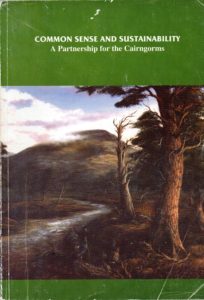

In the talk I am giving tonight in Kingussie, I will be looking at the recommendations set out in the Report of the Cairngorms Working Party, Common Sense and Sustainability. This was published in December 1992 and played a key role in the creation of the National Park 10 years later. While some of its recommendations now look dated or have been overtaken by events – such as the creation of access rights – many are still very relevant today. They provide a good barometer for progress, particularly of landscape scale conservation in the Cairngorms. This post compares the Report’s recommendation on traditional rural housing with what has been happening since.
“We firmly, believe, however, that traditional farm and estate houses and cottages, should be preserved wherever possible……………….they are as much as part of the heritage as our natural heritage and landscape”
Parkswatch has featured rural dereliction and planning blight in our National Parks on several occaisons frequently, most recently the torpedo site in Arrochar (see here). The sheer scale of rural housing dereliction in the Cairngorms, however, only really became apparent when collecting photos for tonight’s talk (and the photos below are only part of it).

Instead of supporting new jobs in forestry and traditional crafts, with people working on site, large woodland grant schemes, like conifer plantations, rely on outside contractors to do the work. An opportunity missed. This still, however, would make a nice house for someone in an idyllic location.

Many of the houses are not remote. Access might be cut off in the snow but people used to deal with those challenges before and these buildings are not that far from the village of Newtonmore. What has happened is that estate staff have been moved off estates – that might be positive as it frees them from tied housing – but the buildings have then been abandoned.
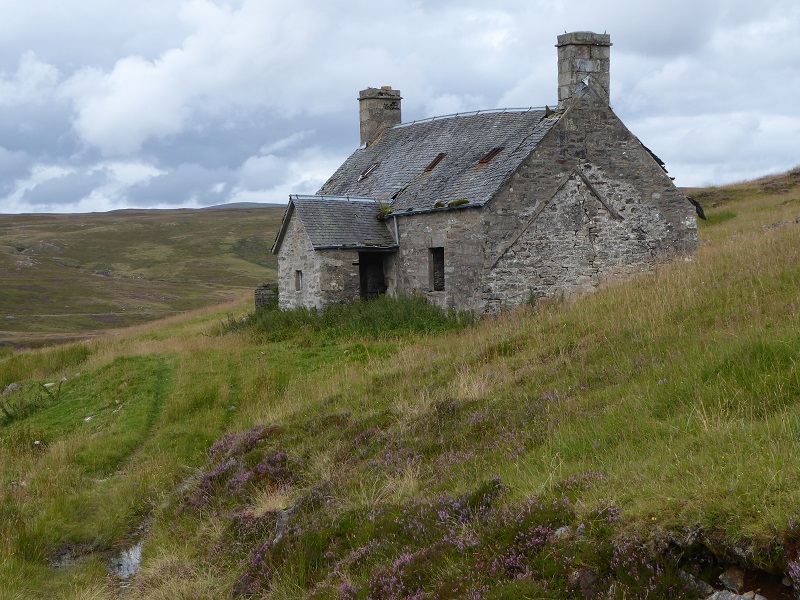
Some abandoned houses may seem too remote and inaccessible. Most people would not want to see vehicles parked outside the door of this house though estate vehicles visit occasionally. The reason its not used, however, has nothing to do with the protection of Wild Land as some people claim. Access is a challenge, with the house being separated from the Glen Bruar track by the river. Its only a kilometre of so however from the Glen Banvie tracks which lead into the Glen Banvie forest, where………………
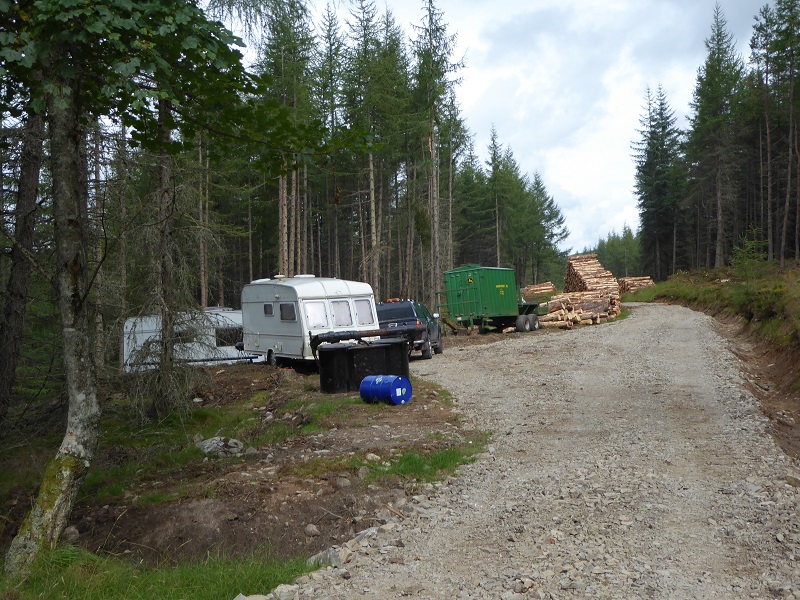
Ruichlachrie might also have provided accommodation for workers on the Glen Bruar hydro scheme, as might this cottage on the west side of the River Bruary:
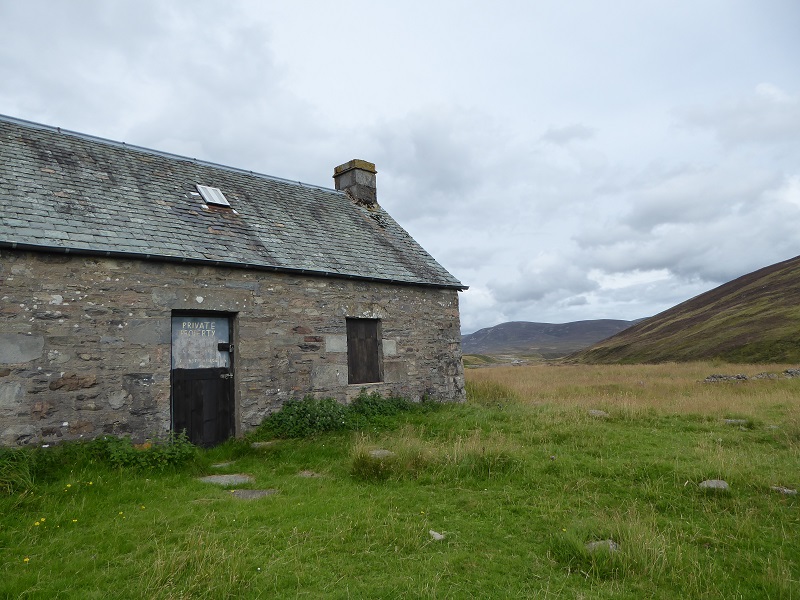
The private property sign tells you a lot. Private interests control what happens to buildings like this.
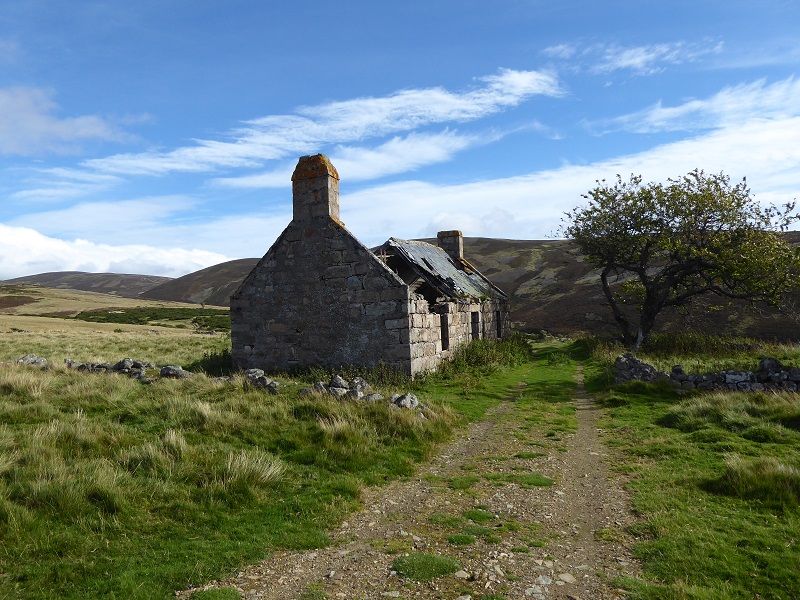
A major reason for this abandonment of traditional rural housing lies in the intensification of the management of grouse moors and increased “efficiency”. The construction of miles of tracks across the hills means far fewer staff are needed to burn heather, check traps and feed grouse medicated grit. Grouse moors have destroyed rather than created rural employment.
Over on the other side of the hill from Glen Fenzie, the whole settlement around Morven Lodge has been abandoned
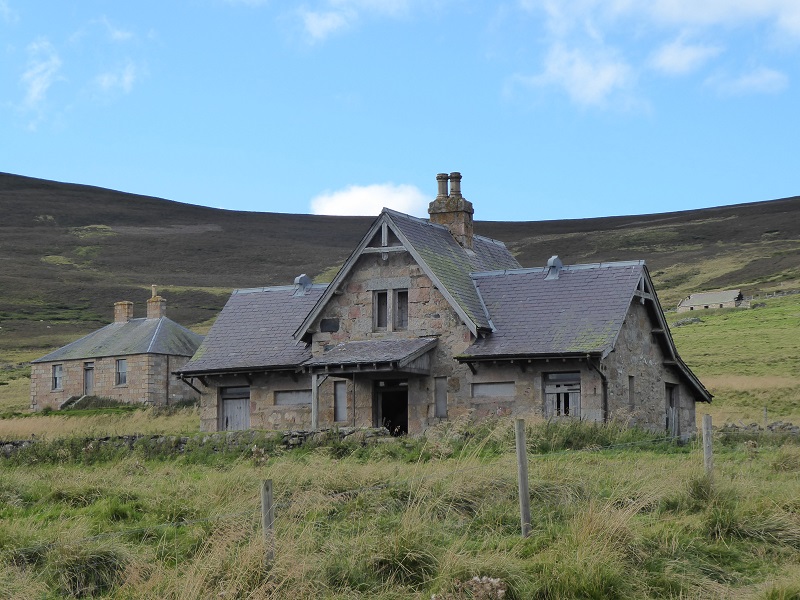
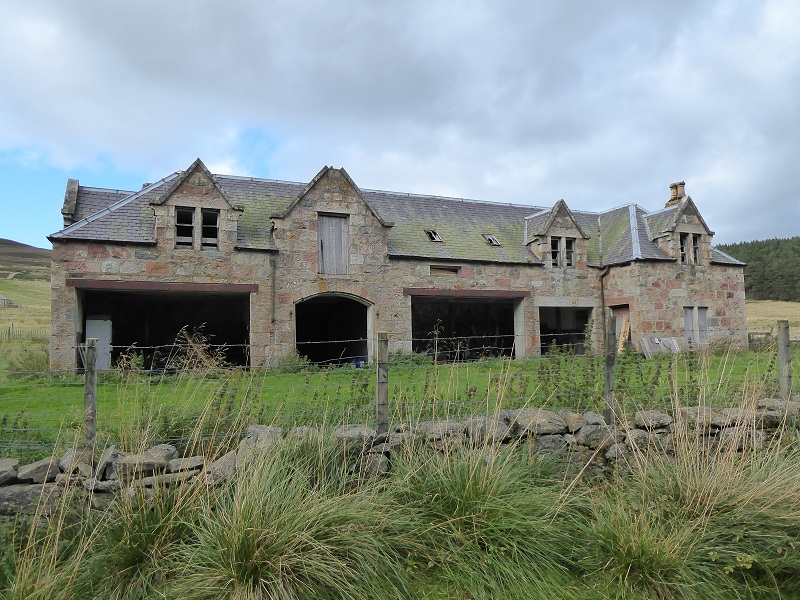 Farming activity has been replaced by grouse moor management and there is no need any longer for Estate buildings to store materials or machinery.
Farming activity has been replaced by grouse moor management and there is no need any longer for Estate buildings to store materials or machinery.
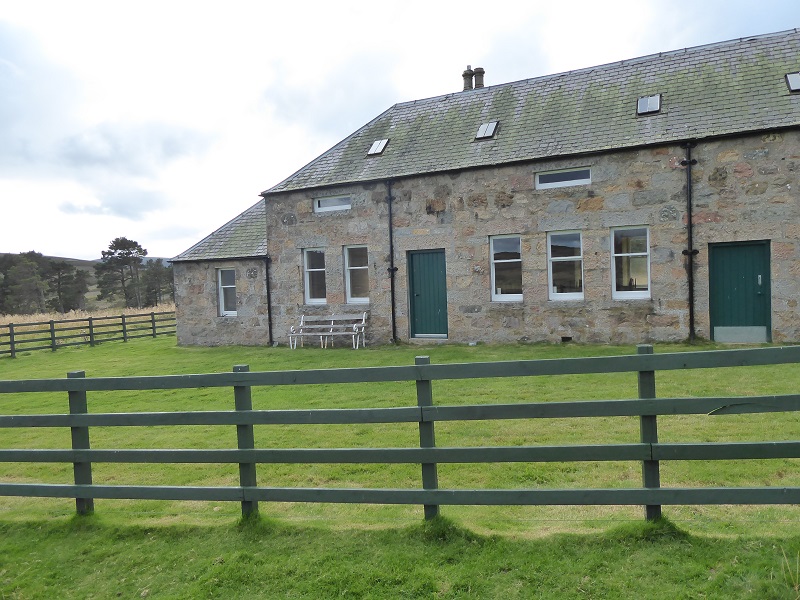
Only one building is now still in use and properly maintained. Its used to provide lunch for wealthy visiting grouse shooters on a handful of days a year. They no longer stay long enough to notice that all the other wildlife that used to be found here has disappeared.
Why not then find an alternative use for these buildings? The reason primarily lies with the estates. They don’t want people living or staying here and the main reason for that I suspect is it might interfere with the intensive management of the grouse moor. A few more residents might help protect our mountain hares and golden eagles.

In some cases, however, availability of funds to renovate properties is an issue as at Derry Lodge where the National Trust for Scotland has developed plans to turn this into hostel type accommodation – for which there would be huge demand – but apparently lacks the money to do so. A rural investment bank, such as exists in other countries, which could finance such initiatives at low rates of interest is sorely needed in Scotland.
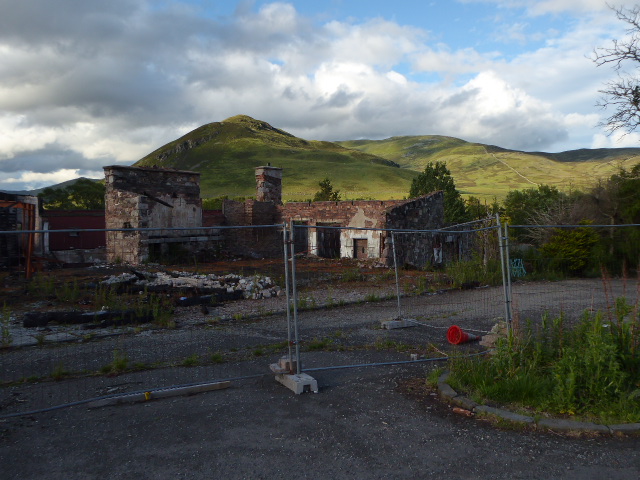
Such a bank might help fund alternatives to failed developments such as the former hotel at Spittal at Glen Shee.
However, a large number of derelict rural buildings lie on land owned by some of the richest people in the country – or world. People such as Majid Jaffar, the owner of the Glen Banchor Estate, are not short of a bob or two to renovate rural buildings if they so wished. The problem is they appear generally uninterested in the rural fabric unless it relates to hunting. The proof of this, if you need it, lies with what Danish Billionaire Anders Povslen is doing on his estates.
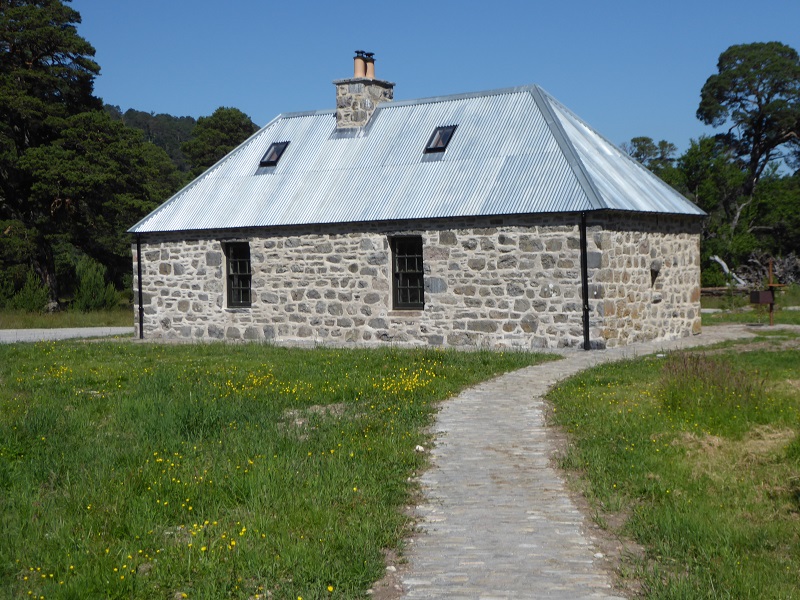
For Anders Povslen is busy renovating traditional rural buildings that lie on his estates and putting them back into use as at Killiehuntly.
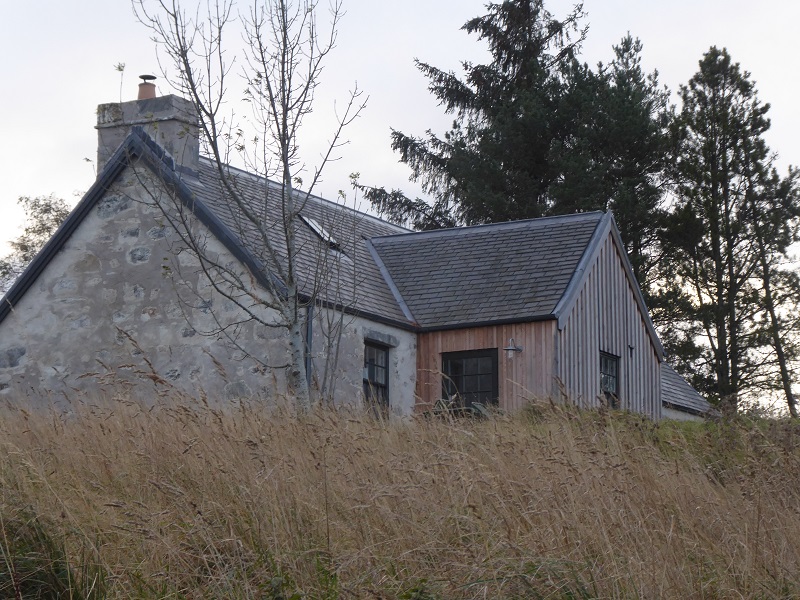
This is exactly in line with what Common Sense and Sustainability was recommending 26 years ago. It exposes the general failure of estates elsewhere to maintain the rural heritage and rural employment.
What needs to be done
The Cairngorms National Park Authority is at present preparing its new Local Development Plan. Building on the recommendation in Common Sense and Sustainability. This should include a commitment to save, renovate and put back into use traditional rural buildings in the National Park. An inventory of such buildings along with plans for them, if any, would be a start. Where no plans exist, the CNPA should develop mechanisms to work with local authorities to compulsorily purchase these properties and put them back into use. The issue is NOT demand, its who controls these buildings. A remote disused building which was available to buy for a low price on condition it was renovated within a certain period of time and then used, either as a first home or for holiday lettings (but not for holiday homes) would be a very attractive proposition either to individuals or community organisations.

Why the picture at the Spittal of Glenshee?
The site in question was a hotel that burnt down a number of years ago.
Yes, possibly getting beyond myself and losing the focus of the post – though the comment below the photo was that a rural bank could address other dereliction issues and not just rural housing. The former hotel sites blights what should be a beautiful rural settlement. I hope to cover a bit more on other types of dereliction in our NPs over the next few weeks, Nick
Nick, thanks for highlighting this issue in the National Park, where there is undoubtedly significant housing pressure, particularly for affordable homes due to the property values and number of second/holiday homes. Unfortunately this problem extends right across rural Scotland, it would be interesting to have a look at what the Highlands Small Communities Housing Trust (www.hscht.co.uk) has been doing with local groups to renovate empty houses and open up affordable plots. Also of note is the work being done in Orkney, which has the highest percentage of empty homes of any local authority area in Scotland (http://www.orkney.gov.uk/Service-Directory/H/empty-homes.htm). There are lessons to be learned for the CNPA and good practice to follow from HSCHT and the Orkney Islands Council.
Steve, thanks this is really helpful, Nick
Nick, in addition to the issues of rural depopulation and lack of housing for rural workers that these abandoned houses represent, there is a heritage issue. These buildings help define what makes the highlands distinctive, and are part of this cultural landscape. They tell a story about the history of the highlands and some in your pics have clear architectural value, so surely they could be classed as heritage assets. I know the legacy of historic absentee landlords on sporting estates is maybe not valued by everyone, but it’s a waste to lose them. You’re right to raise this. Has Historic Environment Scotland got any advice/policy on this ?
Thanks Marion I totally agree they are part of the cultural landscape and their loss deepens the gap that has been created by the loss of people who lived in these places These Victorian buildings are a monument to the creation of sporting estates which played a key role in that process and were themselves sometimes inhabitated by survivors of that process (the people who got to stay on the land as gamekeepers and other estate staff). Let these buildings go and that cultural gap increases further. I have checked and been unable to find any specific policies on this on Historic Environment Scotland. There is an opportunity for the CNPA however to include specific policies designed to save these buildings in its forthcoming Local Development Plan which will be consulted on soon.
Thank you for this biriiliant article Nick. I’m a crofter and I’ve been looking for a new croft where there’s a derelict building on site that I can put back to how it woulda been originally, preferably using the SPAB to guide this. I’ve got the money to do it, but goodness me it’s hard to get somewhere. It’s frustrating me. So many lovely empty huises, just going to rot. I would like to do it with no parking available right up by the house, just parking a way away and very basic services. You ever hear of anything like this in Highland that’s not on the open market please let us know on here or put it ma way. Thanks again.